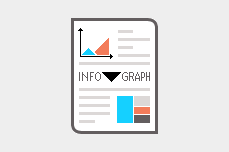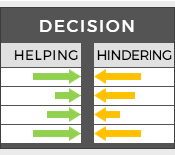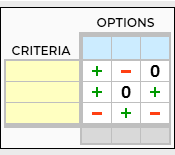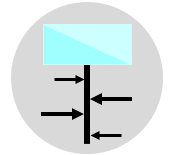
Also known as Positive Negative Forces Analysis.
Variants include Decision Balance Sheet, Force Field Theory of Change and Conflict Analysis.
Force Field Analysis is a basic decision-making technique that is used to analyze the underlying forces behind any decision. Better decision-making outcomes are typically achieved by weighing up the helping and hindering forces then deciding whether to go for or against a given decision. Force field analysis finds wide application in project management, process management, change management, organizational transformation, as well as in social and cultural sciences.
Change agents and leaders at all levels can use force field analysis to assess the pros and cons of any organizational decision. This technique is particularly valuable when decision making is difficult or challenging, and you need a quick tool to make a go no-go decision. It facilitates a comprehensive understanding of the benefits, costs and risks related to a decision, which in turn assists in explaining the reasoning behind the selection.
An illustrative example of this technique is the assessment of whether to install new machinery to a production line or not. Additional examples include deciding whether to employ an in-house team or engage outsourced professionals, deciding whether to develop an in-house system versus adopting a commercial solution, or deciding whether to expand the business versus maintaining stability and profitability.
Force Field Diagram
Force field analysis is often represented through diagrams to enhance team engagement. Each force or argument is normally represented by an arrow. The procedure involves listing all possible helping forces to the left of the line, listing all possible hindering forces to the right of the line, assigning scores based on the level of influence by each force, and subsequently determining the dominant side. It is important to note that the length or thickness of each arrow indicates the weight of the force.
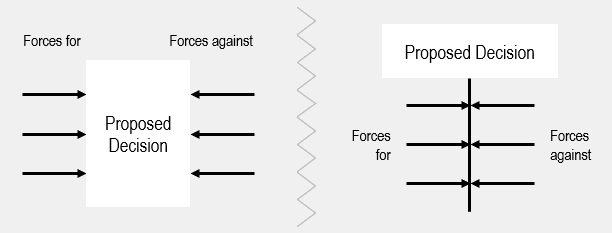
Constructing a Force Field Diagram
Force field analysis can be effectively executed by following these seven steps:
- Gather the team and involve experts where appropriate.
- Describe the decision that needs to be made.
- Write the decision in a box at the top middle of a flipchart paper or whiteboard.
- Draw a line from the box down the middle of the paper.
- List all possible helping forces left to the line, then list all possible hindering forces right to the line.
- Allocate a numerical score to each force indicating its significance (e.g., from 1 to 5).
- Add up the scores of both lists to find out which force wins.
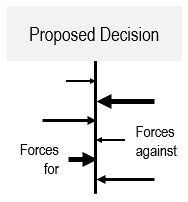

Many questions can be used to help identify the forces involved. Here are a few examples:
- What are the benefits and costs?
- What is the best or worst thing that could happen?
- How easy or difficult will it be to implement?
- How long it will take?
- What would happen if the decision was not made?
- What must be done to make it work?
Example
The following is an example of a force field diagram that was created to determine the implementation of a content management system within a company.
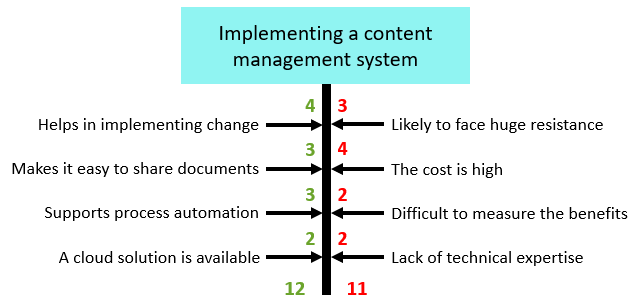
Example
Here is an example of a force field analysis conducted to decide whether to hire an internal or external consultant.


There are many tools available to assist in the application of the force field analysis technique. One of the most straightforward approaches involves utilizing this force field analysis template.
Wrapping Up
By using the force field analysis technique to analyze both the helping and the hindering forces behind a decision, and by presenting the pros and cons in a way that is comparable, decision makers can make more intelligent business decisions in a team-oriented manner.
Other Formats
Do you want to use the slides in your training courses?

Force Field Analysis Training Material – $14.85
Related Articles
Related Templates


